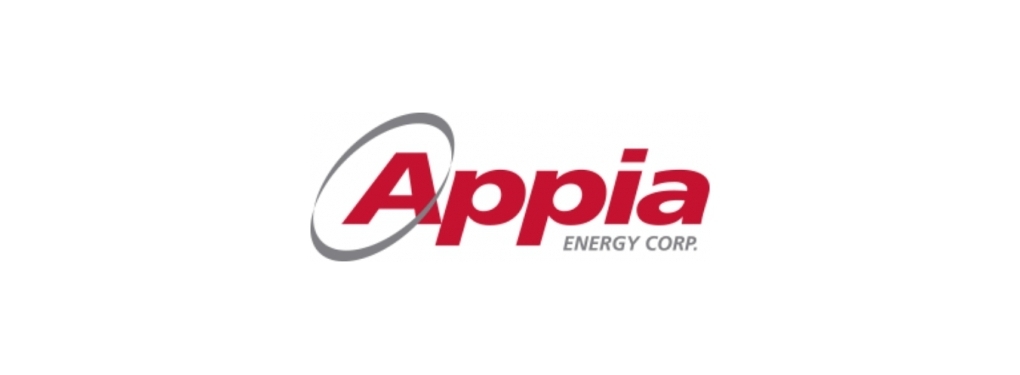Toronto, Ontario--(Newsfile Corp. - June 20, 2023) - Appia Rare Earths & Uranium Corp. (CSE: API) (OTCQX: APAAF) (FSE: A0I0) (the "Company" or "Appia") is pleased to provide an update on its newly acquired Cachoeirinha rare earths project ("PCH Project") located near Iporá in the state of Goiás, Brazil. This update results from a due diligence field visit and project review by Appia personnel, including Mr. Don Hains, an expert in industrial minerals.
The PCH project hosts rare earth element (REE) mineralization in both ionic clays developed from the weathering of alkaline granites, and in-situ rare earth mineralization associated with the underlying granite and a carbonatite intrusion to depths >100 m.
"Mineralization is widespread across the property with the most advanced target being a 2 km wide zone in the SW corner of the tenements known as Target 4," stated Mr. Don Hains, senior consulting geologist and QP. "The exploration work by the vendor showed REE enrichment in the soils to depths of 8 to 26 m with the majority in the upper 8-10 m. Total REE grades in numerous auger holes drilled at Target 4 ranged from 274 ppm to 16,648 ppm (1.66%), with an average of 1,291 ppm total REE and, importantly, the valuable rare earths used in magnet applications (Pr, Nd, Tb and Dy) + Y accounted for approximately 14% of total rare earths, with a maximum of 28.4%."
Appia completed 110 duplicate samples from twin auger holes distributed across Target 4 as part of its due diligence program and found comparable results to the original assays. Due diligence samples were also collected from trenches (17 samples) and diamond drill holes (76). Assay data for these samples also showed comparable results to the original sample data.
Due diligence samples were assayed at the same laboratory (SGS Geosol in Vespasiano, Brazil) using the same methods as the original samples (IMS95R and ICM40B). SGS Geosol is an ISO 17025 registered laboratory. Certified standards from OREAS were used to measure laboratory accuracy and precision. Supervision of the due dilignece assays was under the control of Mr. Hains.
He continued, "The average Heavy REE value is 145 ppm, or 13.93% of the total rare earths. In contrast, the Serra Verde project currently under construction in northern Goais State has total average REE values of 2,138 ppm (0.2138%)[1] but HREE values of only 155 ppm, or 7.26% of total rare earths. Thus, the PCH project has a relatively higher content of HREE in the deposit than Serra Verde."
"The overall assay values of samples obtained to date are considered comparable to other ionic clay type rare earth deposits in Brazil such as Serra Verde and Araxa," stated Stephen Burega, President of Appia.
"Such deposits generally have relatively low rare earth values compared to hard rock deposits but typically present more easily processed material with good recoveries and can thus be highly cost competitive against high-grade, hard rock rare earth projects. The relatively high assay values for Pr, Nd, Tb and Dy, the most valuable magnetic rare earth elements, are positive for development of the project," he concluded.
Next Steps for 2023
The proposed 2023 exploration program will include high resolution topographic surveying across the Eastern claim blocks followed by a reverse circulation (RC) drill program including approximately 300 holes at 100m x 100m spacing totalling 4,500 metres on Target #4. Additional auger drilling will further delineate the extension of the rare earths potential to the West of Target #4. The RC drill program is planned to reach an average depth of 15 meters per hole, and will be sampled at 1/2 meters intervals.
The available data indicates that there is considerable exploration potential throughout this large property. Significant areas in both the western and eastern portions of the property show high relative radiometric values indicative of potential rare earth mineralization but these areas remain untested by drilling. It is reasonable to expect that the overall potential of the project can be increased significantly with further work in these areas.
"Preliminary metallurgical test work has involved mineralogy studies at Actlabs and SGS Mineral Services in Canada and geometallurgical and flotation test work at the Federal University of Goiás ("UFG"). La, Nd and Nb were successfully floated in these tests, with recoveries of La and Nd typically averaging about 50% for the best collector conditions even without any up-front processing", according to Hains. "Importantly, the flotation concentrates averaged 127 ppm Th and 38 ppm U, indicating radioactivity issues associated with mineral processing should be very manageable."
Very preliminary leaching tests undertaken at SGS Mineral Services in Canada indicate the potential to successfully leach rare earths using ammonium sulphate, thus demonstrating the ionic clay nature of the mineralization. The Company advises that substantial additional metallurgical test work will be required as the project advances; however these very preliminary results do indicate that either flotation and/or leaching may be viable recovery schemes. It is likely that a combination of the two recovery processes may be required to maximise the recovery and produce a suitable concentrate as feed for further processing.
Appia's local partner has been active on the PCH project for the past 2 years, and the team has compiled a significant dataset including geophysics and geochemical results as well as auger, drill and trenching samples across 9 delineated targets on the Western limb of the project area. There remains more that 50% of the project area still to be explored and assessed for its potential.
Location
The PCH project is located approximately 30 km from Iporá, a medium size city in the state of Goiás, with a population of approximately 31,500 and well-developed infrastructure. The region around Iporá has significant ongoing mineral exploration and mining activity including active mines operated by Dundee Precious Metals and Yamana Gold. The property is well connected by a series of roads and is mainly used for farming. Local and community relations with mining and exploration companies including Appia's predecessors at PCH are excellent.
Background on the PCH Project
The Cachoeirinha Project (PCH Project) is located within the Tocantins Structural Province in the Brasília Fold Belt, more specifically, the Arenópolis Magmatic Arc. The PCH Project is 17,551.07 ha. in size and located within the Goiás State of Brazil. It is classified as an alkaline intrusive rock occurrence with highly anomalous REE and niobium mineralization. This mineralization is related to alkaline lithologies of the Fazenda Buriti Plutonic Complex and the hydrothermal and surface alteration products of this complex by supergene enrichment in a tropical climate. The positive results of the recent geochemical exploration work carried out to date indicates the potential for REEs and Niobium within lateritic ionic adsorption clays.
The technical content in this news release was reviewed and approved by Mr. Don Hains, P.Geo, Consulting Geologist, and a Qualified Person as defined by National Instrument 43-101.
About Appia Rare Earths & Uranium Corp
Appia is a publicly traded Canadian company in the rare earth element and uranium sectors. The Company is currently focusing on delineating high-grade critical rare earth elements and gallium on the Alces Lake property, as well as exploring for high-grade uranium in the prolific Athabasca Basin on its Otherside, Loranger, North Wollaston, and Eastside properties. The Company holds the surface rights to exploration for 113,837.15 hectares (281,297.72 acres) in Saskatchewan. The Company also has a 100% interest in 12,545 hectares (31,000 acres), with rare earth element and uranium deposits over five mineralized zones in the Elliot Lake Camp, Ontario.
Appia has 130.5 million common shares outstanding, 143.5 million shares fully diluted.
Cautionary Note Regarding Forward-Looking Statements: This News Release contains forward-looking statements which are typically preceded by, followed by or including the words "believes", "expects", "anticipates", "estimates", "intends", "plans" or similar expressions. Forward-looking statements are not a guarantee of future performance as they involve risks, uncertainties and assumptions. We do not intend and do not assume any obligation to update these forward- looking statements and shareholders are cautioned not to put undue reliance on such statements.
Neither the Canadian Securities Exchange nor its Market Regulator (as that term is defined in the policies of the CSE) accepts responsibility for the adequacy or accuracy of this release.
For more information, visit www.appiareu.com
As part of our ongoing effort to keep investors, interested parties and stakeholders updated, we have several communication portals. If you have any questions online (Twitter, Facebook, LinkedIn) please feel free to send direct messages.
To book a one-on-one 30-minute Zoom video call, please click here.
For further information, please contact:
Tom Drivas, CEO and Director: (cell) 416-876-3957 or (email) [email protected]
Stephen Burega, President: (cell) 647-515-3734 or (email) [email protected]
[1] Source: company website, www.serraverde.com.

To view the source version of this press release, please visit https://www.newsfilecorp.com/release/170535







